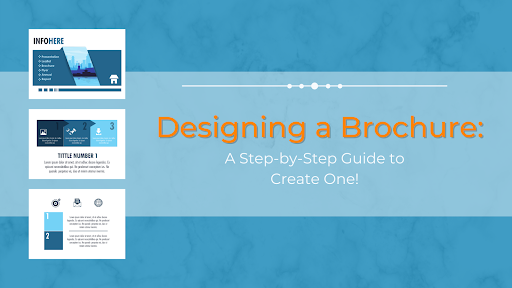Are you looking for ways to upgrade your brochure designing services in a way that drives more customers? A brochure is one of the most effective marketing tools a customer can use.
A brochure is a layout that contains information and illustrations about a business. It can be printed out as a pamphlet, flyer, or leaflet and hence is the best tool used for marketing.
Table of Contents
How does a brochure help grow a business?
- A brochure contains information and facts about a business. It can attract potential customers to a business.
- It also serves as a source of information for the clients interested in investing in a business.
A brochure, being a versatile marketing tool, can change the condition of a business and take it to a whole new level. Hence, designing a good brochure with all the necessary information about a customer’s business is essential.
What should be included in a customer brochure?
A brochure should include the following elements to make it attractive and informative-
- Services offered by customers. Mentioning customers’ services and products in the brochure is a must. After all, advertising them is the whole point of the brochure.
- Images. The brochure should contain images related to business. An illustration is a very effective way to convey a message.
- Contact Information. Contact information will help the customers to reach.
- Address and Time. An address for potential clients to visit and a time slot to visit in between.
- Call to Action. A call to action will urge the customers to visit as soon as possible.
A brochure should be compelling and catchy to attract the customers’ attention.
Are you searching for ways to make a good brochure for your customer? Are you wondering how to design a brochure in a unique and quirky way? Then, you are at the right place; here is a guide for the same.
Designing a Brochure: A Step-by-Step Guide to Create One!
- Decide the Purpose and elements. The brochure should have information about what customers business is and the purpose behind the business. Also, plan out what the customer wants to talk about in the brochure. Ideally, one can mention the objectives and mission of their customers’ business, the products and services provided, the exciting offers they have, and many more.
- Write engaging content. A brochure must catch the attention of the customer’s audience and keep it. The written information provided on the brochure will help the client’s customer decide whether or not to take the services. Hence, one should write engaging, compelling, and informative content on the flyer.
- Plan the layout. A brochure includes information as well as illustrations. To make a compelling and convincing brochure, these two should not contradict each other. Use a good layout that balances both the information and images. One simple solution is available today which can easily overcome all the above challenges without any extra investment of time and money, and it is none other than graphic design software. Print businesses should leverage this opportunity to use graphic design software to design a good layout of customers’ documents. Also, pick out a unique font, theme, and design for the brochure.
The graphic design software comes with various features that allow its users to configure brochures with different types of brochure folds and the sizes, for example, half-fold, tri-fold, z-fold, gate fold etc. with the live pricing calculator.
- Images. Adding suitable images to the brochure helps in two ways. One, it attracts the reader. Two, it increases the readability of the brochure. After seeing the image, people’s interest is piqued, and they read the brochure with interest.
- No overload of information. Provide just the necessary information in the brochure, don’t overload it. Writing too much information can often discourage the customers from not reading the brochure at all! Hence, provide positive and adequate information that can attract your customers’ target audience.
- Proofread and Test. After arranging all the necessary data into the desired format, proofread the brochure. Take some prints of the brochure to ask for a third-person view brochure. Ask for honest feedback from your employees, family, and friends about the brochure. Make necessary changes(if any)
- Print. Choose the type of paper according to customers preference. Uncoated, matte-finished, high gloss, and many more are available to select. The feel of the paper also adds to a good impression on the reader; make sure to choose the right one. Take out prints of the brochure and give it to the customer.
While designing a brochure, try to convey more using fewer words. A brochure represents a business’s principles and personality. A brochure makes a first impression on the audience; make one that will have a long-lasting impression on your customer’s target audience.










